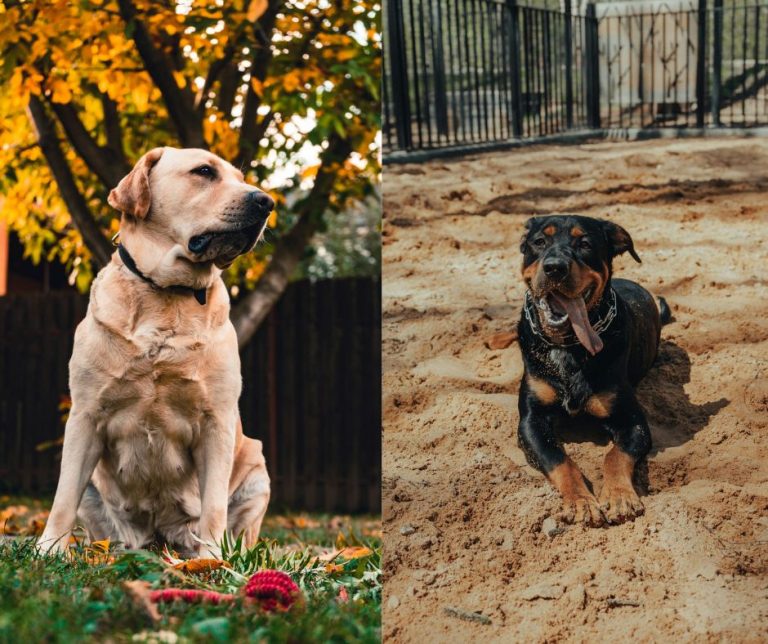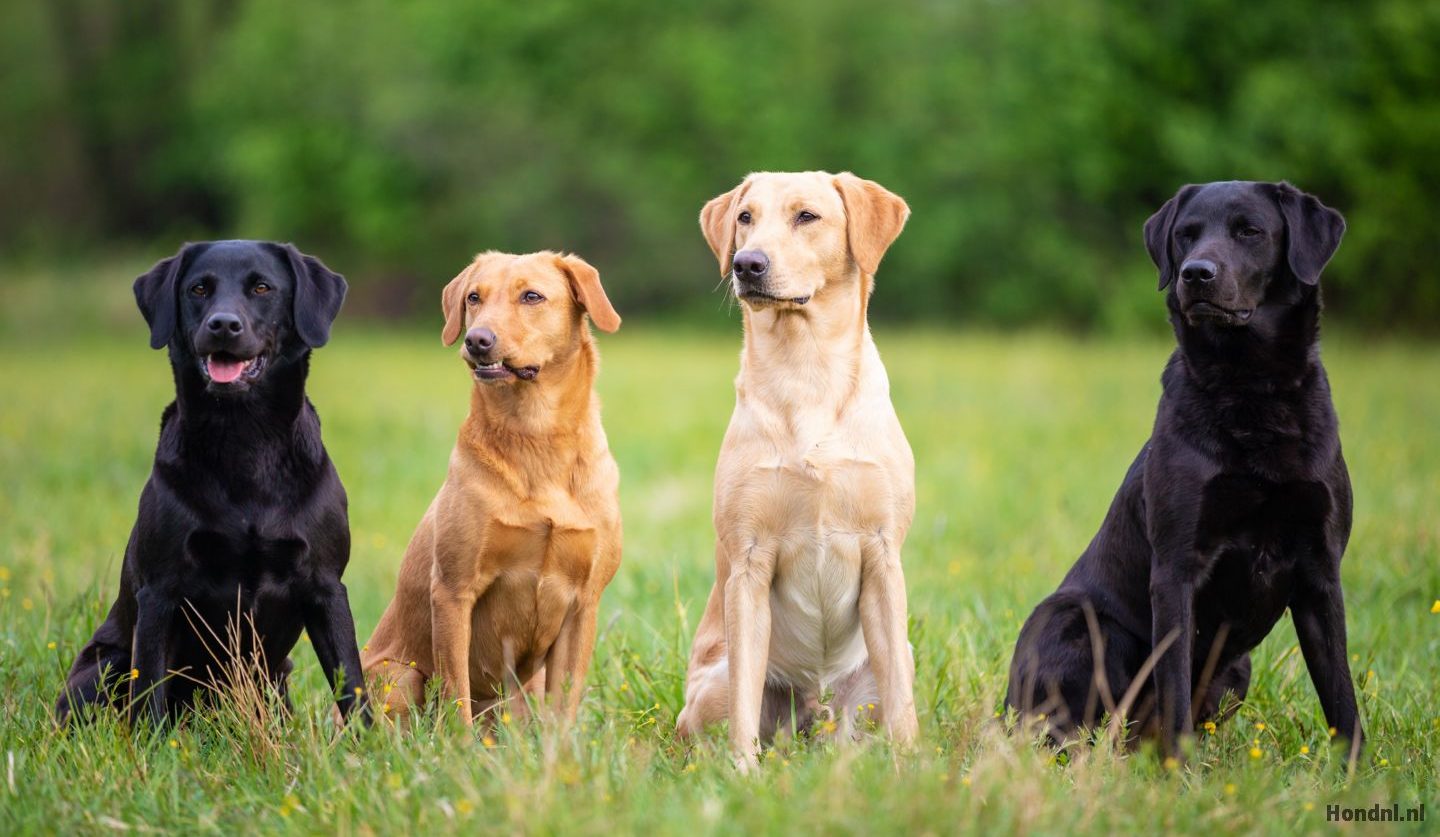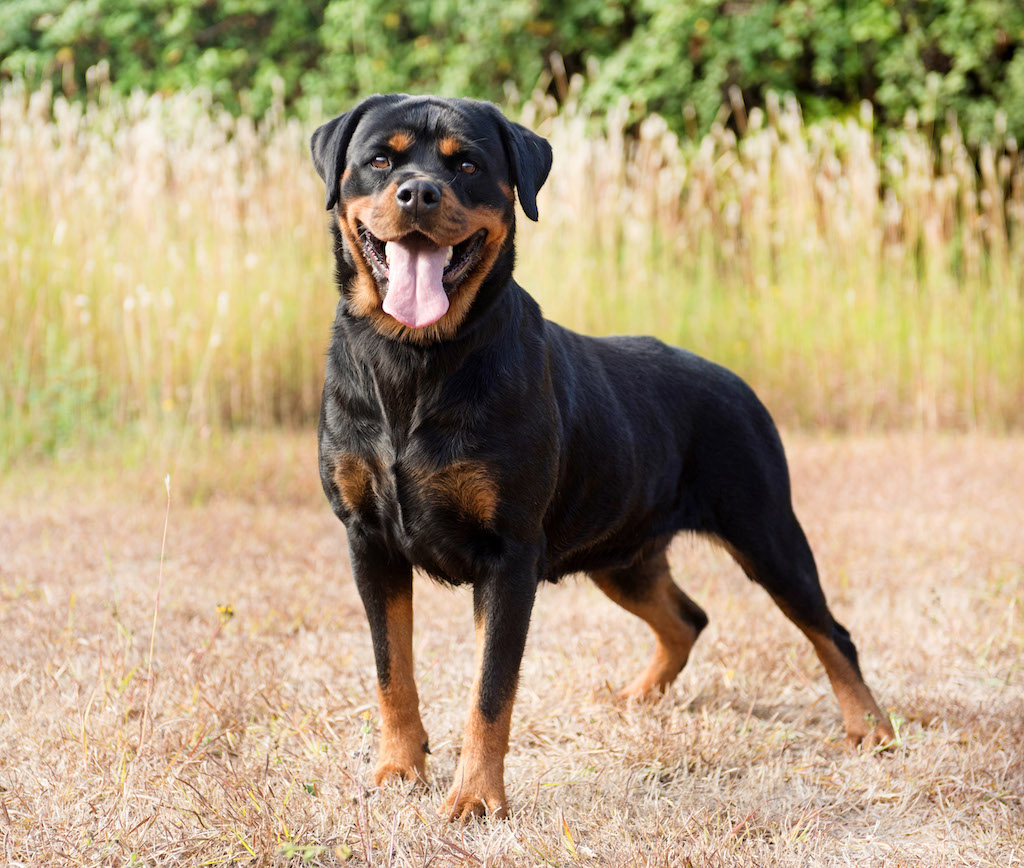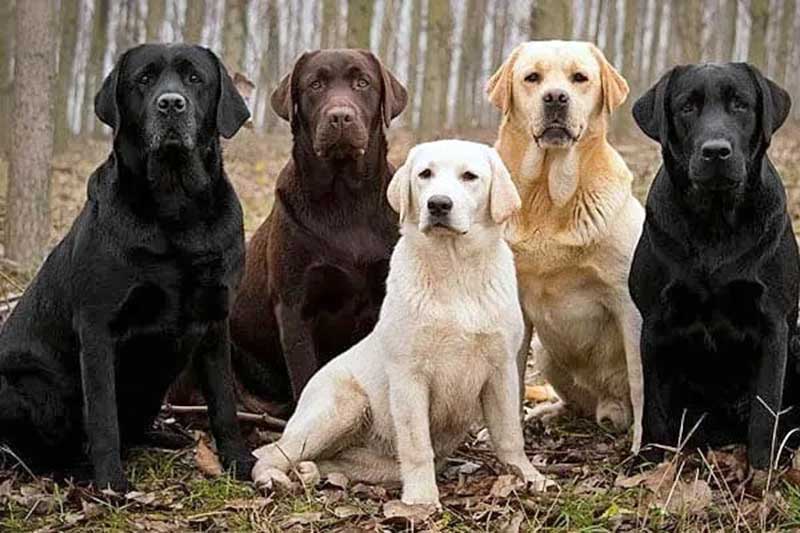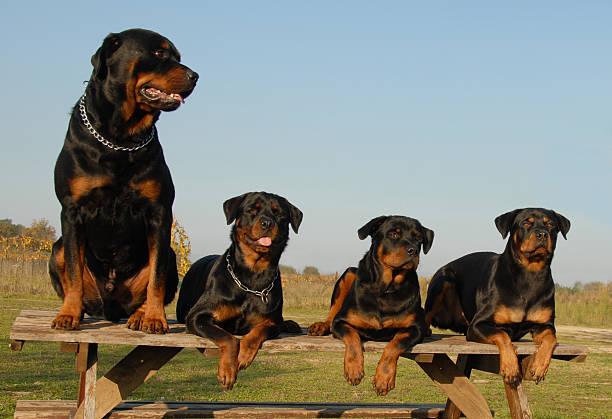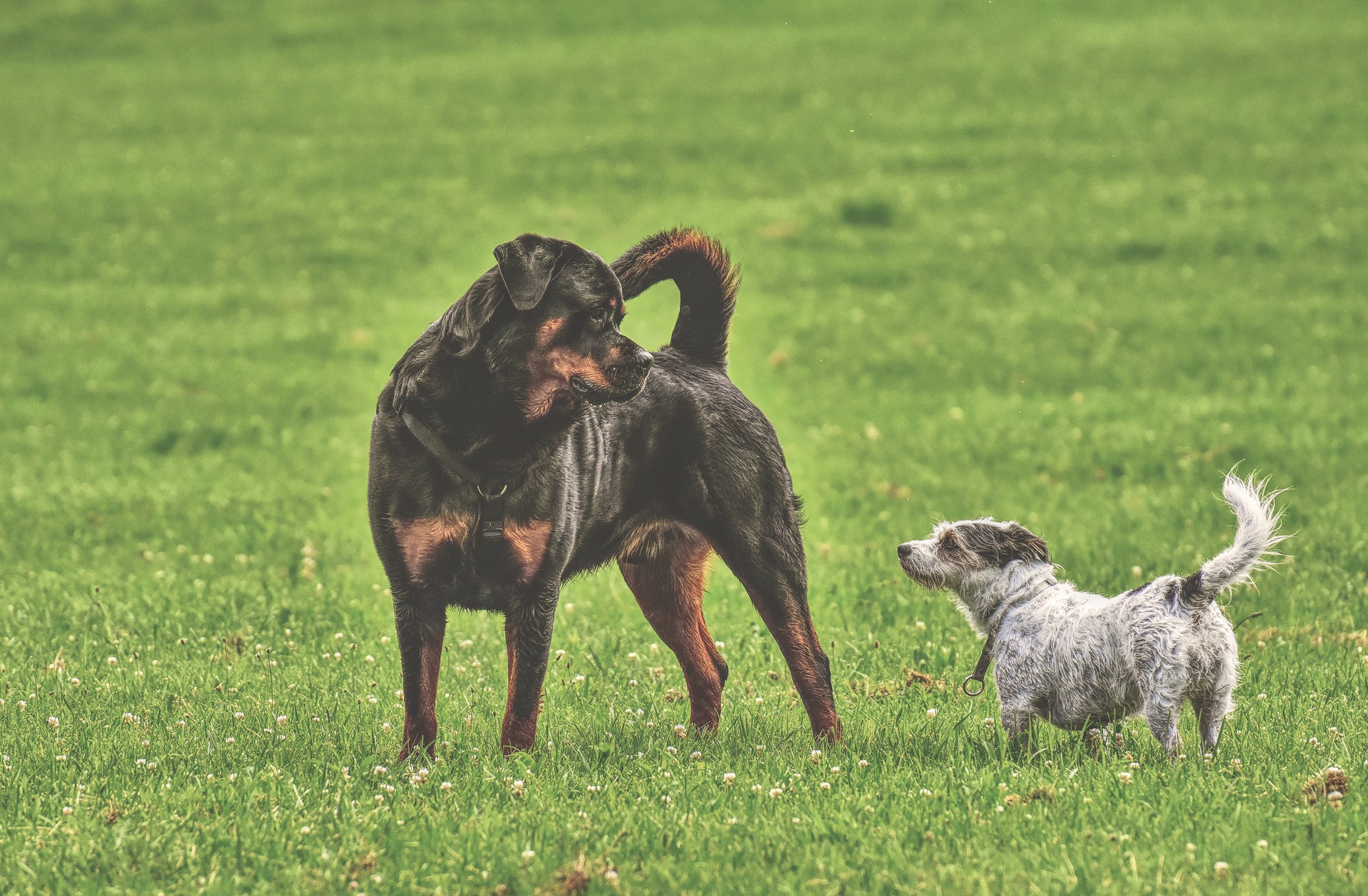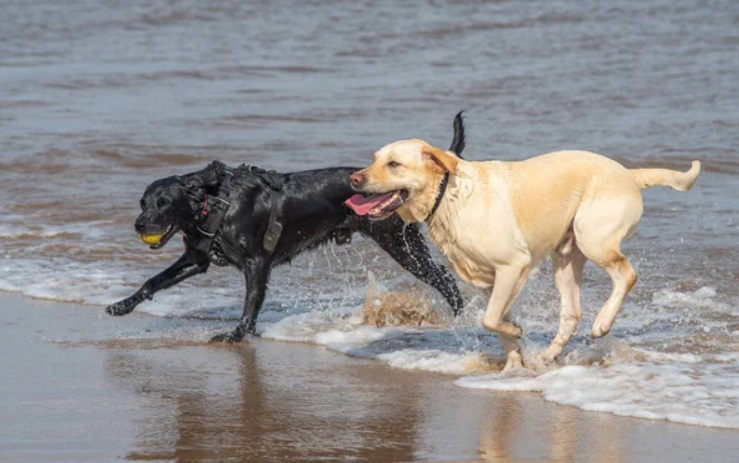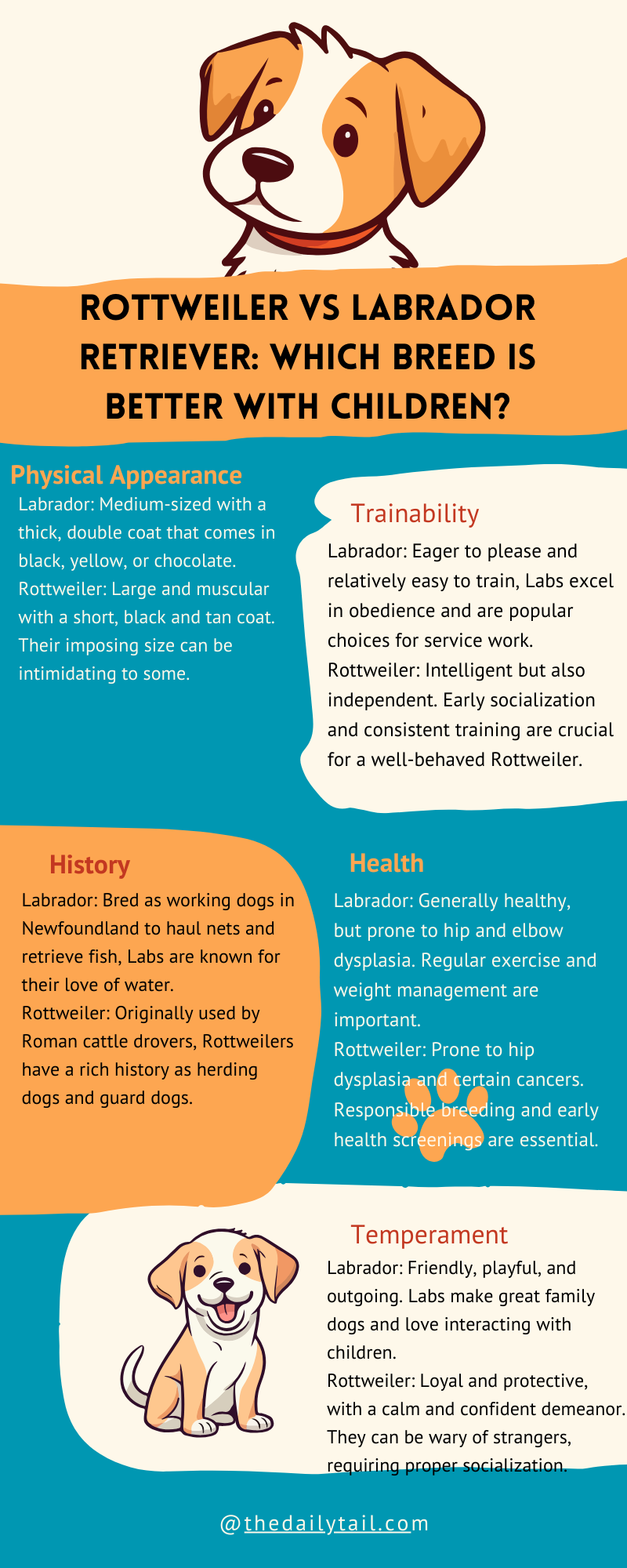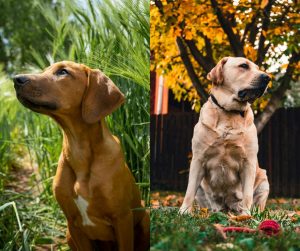When you want to bring a new puppy home, the first thing you look at is fit. And if you have children, you look at how the prospective dog will fit with them.
Now, I must say, I hate it when people give Rottweilers a bad reputation. While it is a fact Rottweilers are big, they are not dangerous or aggressive. It is all a myth. In fact, Rotties are some of the friendliest and most sociable dogs you will find.
Of course, it all depends on you raise them. You can raise them to be guard dogs, or be friendly puppies. That being said, we all know Labradors are some of the most popular dog breeds and family pets. Labradors are often poster boys for movies with family pets.
So, how do Rottweiler vs Labrador debate settles? Which dog breed is your better family pet? Let’s try and take a look. Each breed offers distinct traits that might sway a decision.
Rottweilers are robust, muscular dogs, renowned for their strength and protective nature, making them excellent guardians for their homes.
Meanwhile, Labradors are known for their friendly demeanor, playfulness, and strong bond with family members, which makes them fantastic pets for those seeking an active and affectionate friend.
Rottweilers generally present a more imposing figure due to their larger build and muscular frame, which might appeal to those looking for a pet with a commanding presence.
On the other hand, Labradors typically exhibit a more approachable size, and their friendly faces and wagging tails are synonymous with a family-friendly pet.
Both breeds are known to form deep connections with their owners, but Rottweilers may show particular loyalty to one family member, while Labradors often spread their affection across the whole family equally.
Key Takeaways
- Rottweilers are strong, protective dogs while Labradors are friendly and energetic
- Rottweilers can be larger and more imposing than Labradors, appealing to those desiring a guardian
- Choosing between the two breeds depends on understanding their exercise, health, and care needs within family life
Breed Origins and History
When we’re talking about Rottweiler dogs vs Labrador Retriever dogs , we’re really digging into some fascinating parts of history. These two were originally working dog breeds. Nowadays, they evolved into something more.
Rottweiler Ancestry
Back in ancient Rome, Rottweilers were the tough, sturdy dogs that trooped along with armies. These muscular pups had a really big job herding and guarding livestock on the move.
They weren’t just any herding dogs, though. They were kind of the muscle of the dog world.
When the Roman armies were busy elsewhere, these furry soldiers found a new home in a German town called Rottweil. This place put them on the map—literally—and gave them their name.
Their history as working dogs didn’t just stop with herding; it included all sorts of jobs like pulling carts. Their German roots really set the standard for what a hardworking dog looks like.
Labrador Lineage
On a separate piece of the globe, Labradors weren’t lounging about either. These friendly dogs hail from way across the ocean in Newfoundland—close to Labrador, but not quite.
They’re named after the sea in Labrador, but their story begins in the 1500s in Newfoundland.
Labs were those kind buddies that hung out with hunters, loved a good swim, and were pretty skilled at fetching ducks without messing up their feathers. This soft-mouthed retrieving was their special party trick.
They made the leap from being everyday helpers to being one of the most popular family dogs around, but they never forgot their history of working alongside humans in hunting scenarios. Nowadays, a lot of people mistake the Labrador Retriever for the Golden Retriever. While they are similar, they originate from different parts of the world.
Here is another fun fact. Breeders make a distinction between an American Labrador and English Labrador.
Physical Appearance
When comparing Rottweiler vs Labrador puppy, each dog breed sports a distinctive look, from their size right down to their unique coats. Let’s walk through their physical traits, where each dog’s built and fuzzy exterior reflects their breed-specific characteristics. The American Kennel Club sets the breed standard for both dogs.
Size and Weight
| Breed | Height (in) | Weight (lbs) |
|---|---|---|
| Rottweiler | 22 – 27 | 77 – 130 |
| Labrador | 21.5 – 24.5 | 55 – 80 |
Rottweilers are hefty, with a muscular frame that speaks to their strength. They can be quite the powerhouse, and it’s pretty clear when you see one that they mean business.
Labradors, on the other hand, are more on the athletic side, strong but not as bulky. They’re the kind of dogs who are always ready for a game of fetch or a swim.
Coat and Colors
Rottweilers come in a black coat with distinct tan markings, while Labradors have a double coat that’s not only weather-resistant but also comes in lovely shades of black, yellow, and chocolate.
That double coat means that both breeds are pretty good at dealing with various weather conditions, which is a nice bonus for a dog you might want to take with you on outdoor adventures.
Distinctive Features
A Rottweiler’s confident look is matched by his sturdy build and a noble, strong face. They have that sort of presence that makes you take a second look.
Labradors have a charm of their own, with their broad head and those expressive eyes that seem to smile at you. It’s hard not to give them a pat when they trot up to you with that ever-wagging tail.
Temperament and Personality
When choosing the right canine companion, a dog’s nature can make all the difference. Rottweilers offer strong protective instincts, while Labradors are known for their friendly demeanor.
Rottweiler Traits
Rottweilers have a rep for being protective and somewhat reserved. They bring a certain boldness to the table – they’re courageous and always on the lookout for their family.
Owners should give them plenty of socialization early on, to bring out their best selves.
With the right training and love, these pups can be incredibly loyal and affectionate. They’ve got energy, sure, but they also know the value of a good nap.
Rottweiler dogs are considered some of the best guard dogs, along with the German Shepherd, Belgian Malinois, and Doberman Pinscher. Fun fact: all of these can be amazing family pets.
Labrador Characteristics
Labradors are the life of the party. They’re outgoing, ultra social, and they’ve got an infectious energy level that keeps everyone on their toes.
They’re super friendly—sometimes to a fault—and they’ll wag their way into anyone’s heart.
These dogs shine in a family setting and they’re about as loving as it gets. They have buckets of love to give and ask for some back in return with their famous “Lab lean.”
Training and Exercise Needs
Both Rottweilers and Labradors need regular exercise and proper training to be at their best. They’re both intelligent breeds that thrive with mental stimulation and activities that keep them moving.
It’s important to start training early on and be consistent with it. Exercise isn’t just about keeping them fit, it’s also crucial for their mental well-being.
Activity Requirements
Rottweilers and Labradors are active dogs that can’t skip their daily workouts. They need a good amount of exercise to stay healthy and happy.
- Labradors: They’re pretty energetic and love activities like fetch, swimming, and long walks. Aim for about an hour of exercise every day
- Rottweilers: They also need daily exercise, but it should be a mix of physical activities and mental challenges to keep their powerful bodies and sharp minds in top condition
When they don’t get enough exercise, both breeds might get bored, and that can lead to trouble, like chewing on things they shouldn’t.
Training Approaches
Training both Labradors and Rottweilers can be a rewarding experience because they’re both eager to please and easy to train, thanks to their intelligence. However, they do have different training needs and styles.
- Labradors: They usually pick up commands quite easily and enjoy obedience training and agility sports. Positive reinforcement works wonders with them
- Rottweilers: With a confident hand and firm, consistent guidance, they learn best
Early training and socialization are key for Rottweilers, as it helps shape their protective instincts in a positive way. For both breeds, mixing up their routines with new tricks and challenges is a great way to provide mental stimulation and keep training sessions interesting for them.
Health and Lifespan
When picking a furry friend, it’s nice to know what health issues might pop up and how long they might be part of the family. Dogs, like us, have their own set of health concerns and an expected time they get to spend with us.
Common Health Issues
Both Rottweilers and Labradors can be healthy dogs, but they do have their share of health issues. They can get sick with things like hip and elbow dysplasia, both of which are joint problems that can cause pain and trouble moving around.
- Hip Dysplasia: This is when a dog’s hip joints don’t fit together quite right, leading to pain and arthritis
- Elbow Dysplasia: Similar to hip dysplasia, this affects the elbows and can be a real problem for the dog
- Obesity: Keeping an eye on their weight is important because being overweight can lead to more health problems
- Eye Conditions: Both breeds can have eye issues, like progressive retinal atrophy, which can cause sight problems and even lead to blindness
- Cancer: Sadly, this is something both Rottweilers and Labradors can face. Regular check-ups are key to catching it early
- Heart Issues: Sometimes they can have heart problems, like aortic stenosis, which is basically a narrow heart valve
- Bloat: It’s a serious and sudden stomach issue that needs quick vet help
Life Expectancy
These furry pals have a certain number of years they’re likely to be around. Labs often live about 10 to 12 years, while Rottweilers have a bit of a shorter time, usually around 9 to 10 years.
It varies with each dog, but these are the average numbers.
Smaller breeds usually have a longer life than giants, and Rotties are pretty big! Both breeds love to run around and play, which is great for keeping fit and maybe even giving them more time with the family.
Care and Maintenance
When looking after these furry friends, they both need a routine that includes regular grooming and a diet that keeps them healthy and happy. Let’s get into what that involves for both Rottweilers and Labradors.
Grooming Needs
Rottweilers have a short, thick double coat that sheds moderately through the year, and more heavily as seasons change. They benefit from a good brush about twice a week with a firm bristle brush that gets through to the undercoat. This helps to reduce shedding and keeps their coat shiny and healthy. Bathing should happen as needed – when they start to smell doggy or if they’ve rolled in something they shouldn’t have.
Labradors, on the other hand, also have a double coat that protects them from water and weather but sheds quite a bit. To keep the fur situation under control at home, it’s wise to brush them several times a week. During shedding season in the spring and fall, daily brushing is a great help. Like Rotties, Labradors also only need baths occasionally unless they get particularly dirty or have a medical reason for more frequent bathing.
Dietary Requirements
Both breeds will thrive on a balanced diet that’s right for their age, size, and energy levels. Labs and Rotties sometimes like to eat a bit too much, so keeping an eye on their portion sizes is important to prevent weight gain that could lead to health issues.
For Rottweilers, incorporating foods with joint-supporting nutrients like glucosamine can be a wise choice. They need a mix of protein, fats, and carbohydrates to support their muscular build and active nature.
Labradors are energetic and need food that sustains their activity without leading to obesity. Quality dog food that lists real meat as the first ingredient is often recommended, and you might find that a food formulated for active breeds suits a Lab well.
Remember, clean, fresh water should always be available for both breeds to keep them hydrated and aid in digestion.
Role in Families and Society
Rottweilers and Labradors both serve important roles in homes and beyond, offering companionship and safety to their owners.
Compatibility with Kids
When it comes to families with kids, Labrador Retrievers shine as superb family pets known for their friendly nature and gentle temperament. They’re often patient with children and can become their loyal playmates. On the other hand, Rottweilers have the potential to be good with kids too, especially when they’re well-trained and socialized from a young age. However, due to their strong build and protective instincts, supervision is key when they’re around little ones.
Working and Guarding Roles
Labradors have a legacy of being helpful working dogs. They are often seen with police or serving as guide dogs thanks to their intelligence and trainability.
Rottweilers, notable for their power and loyalty, are natural guardians. They’ve historically been used for guarding and offer a thick layer of safety for the home.
The Rottweiler’s protective nature makes them effective as a personal guardian or a guard dog for property. However, they need firm, consistent training to ensure they know friend from stranger.

